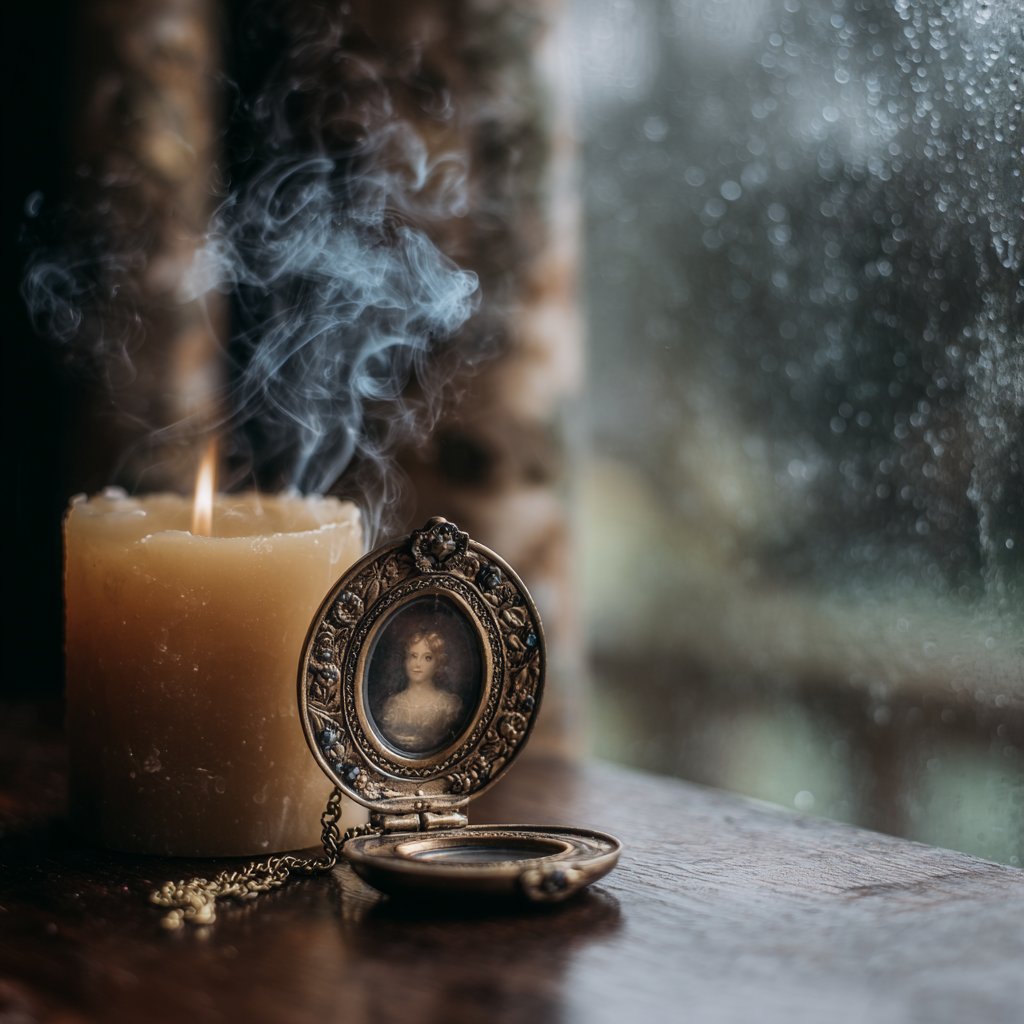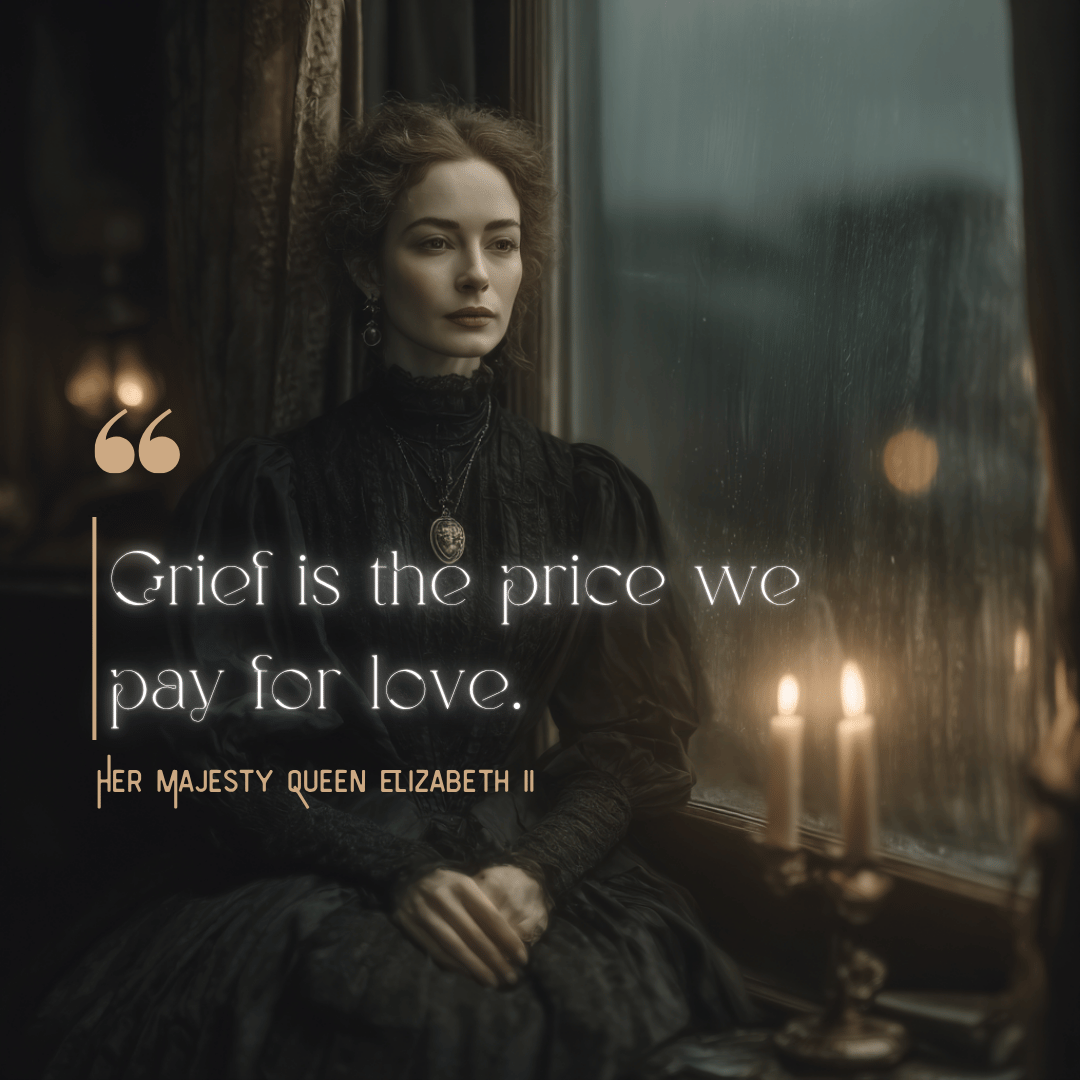
“Grief is the price we pay for love”.
– Dr Colin Murray Parkes, later quoted by Her Majesty Queen Elizabeth II
In 1861, Queen Victoria slipped a small locket around her neck and never removed it again. Inside lay a curl of Prince Albert’s hair, and with it, a grief that would reshape an entire era’s relationship with death. What began as one woman’s private sorrow became a national template for mourning, transforming how the Victorians honoured their dead and carried their love forward.
For them, mourning wasn’t simply a quiet ache endured in private. It was something visible and structured, woven into ritual and objects that made the invisible bonds of love tangible once more. They understood something we’ve perhaps forgotten: that grief, like love, needs somewhere to live.
The Intimacy of Hair
Of all the mourning traditions, hair jewellery feels the most intimate. A single curl, carefully preserved behind glass or woven into gold, offered proof that someone had been here. That they’d been loved. And, somehow, that they still were.
Hair doesn’t decay like the rest of us. It endures long after breath has ceased and skin has returned to dust. That permanence made it the perfect material for memorial tokens, a piece of the beloved that could be carried close to the heart indefinitely.
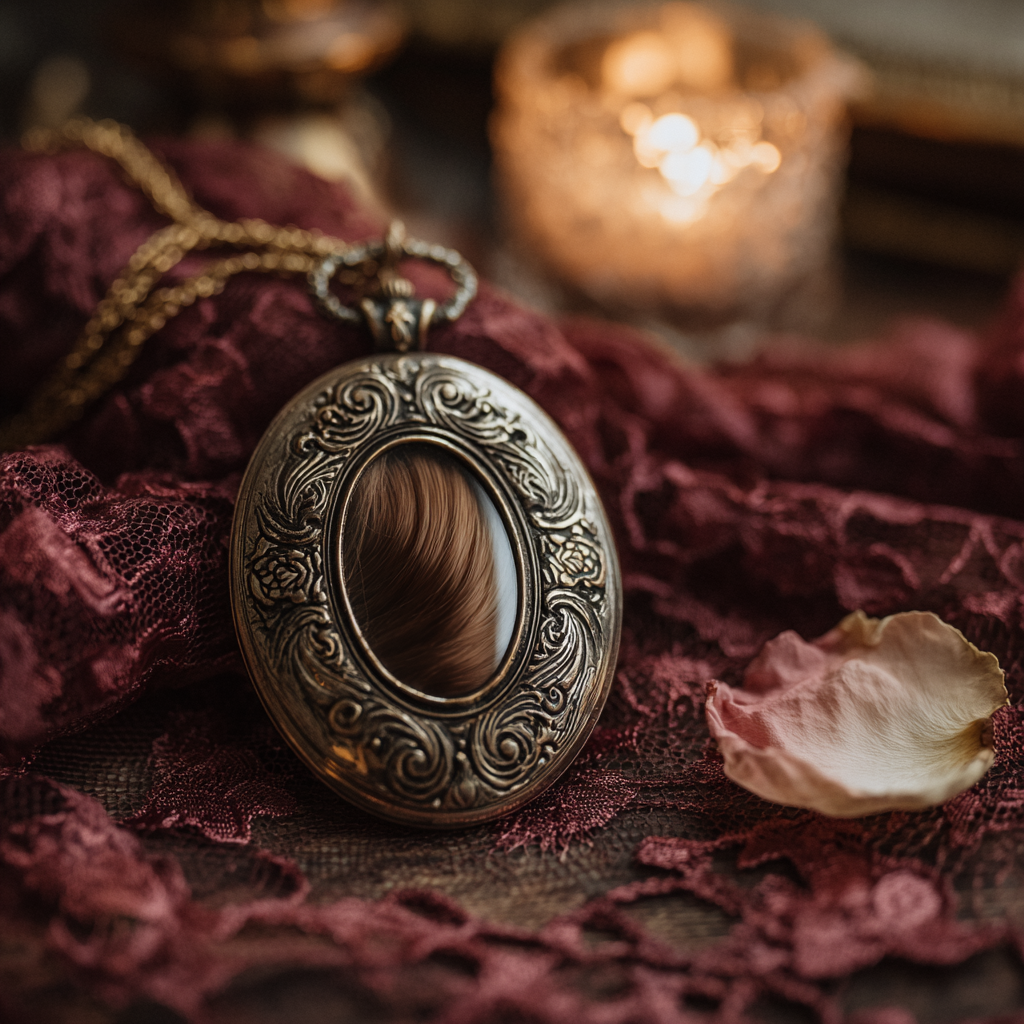
The process was both art and ritual. Hair was first boiled in soda water to cleanse and strengthen it, then painstakingly woven while still damp. Skilled hands could create intricate patterns: forget-me-nots for true love, weeping willows for sorrow, even tiny clasped hands for eternal farewell. Some families commissioned full memorial wreaths, shaped into delicate floral arrangements and sealed behind glass—a family tree of the departed, quite literally grown from their very essence.
Queen Victoria’s choice to wear Prince Albert’s hair turned private grief into public custom. Soon, mourning warehouses in London’s Regent Street displayed entire windows of hair jewellery. Ladies’ magazines published detailed guides so women could craft their own pieces at home, complete with patterns for different relationships: a simple knot for a friend, elaborate plaiting for a spouse, tiny seed pearls woven through a child’s fine locks.
It wasn’t morbid, really. Just profoundly human.
Capturing the Unrepeatable Moment
The Victorians lived in an age when a single photograph was precious, formal, and rare. So when death arrived suddenly, as it so often did, families found themselves facing an impossible loss: someone beloved would vanish from the world without ever being properly captured by the camera’s eye.
Post-mortem photography emerged as both practical solution and tender ritual. The dead were posed gently, as if merely sleeping. Children were cradled in their mothers’ arms, adults settled into favourite chairs, hands arranged naturally, eyes sometimes painted open onto closed lids. These portraits were slipped into family albums not as eerie mementoes, but as treasured chapters in the family story.
The photographers who specialised in this work moved through grieving households with quiet efficiency and unexpected kindness. They understood that families might wait days for their arrival, keeping vigil beside the body, postponing burial until that final image could be secured. Some carried portable studios, others worked with whatever light filtered through drawn curtains.
Ironically, the long exposure times required by early cameras often made the deceased appear more composed than the living, who might blur slightly from involuntary movement or the tremor of barely contained emotion. If you’re ever leafing through old family albums and find a portrait that seems stiller than the others, more perfectly at peace, it might just be one of these final farewells.
The practice speaks to something deeper than documentation. It was about refusing to let someone slip away completely, about insisting that love could make even absence visible.
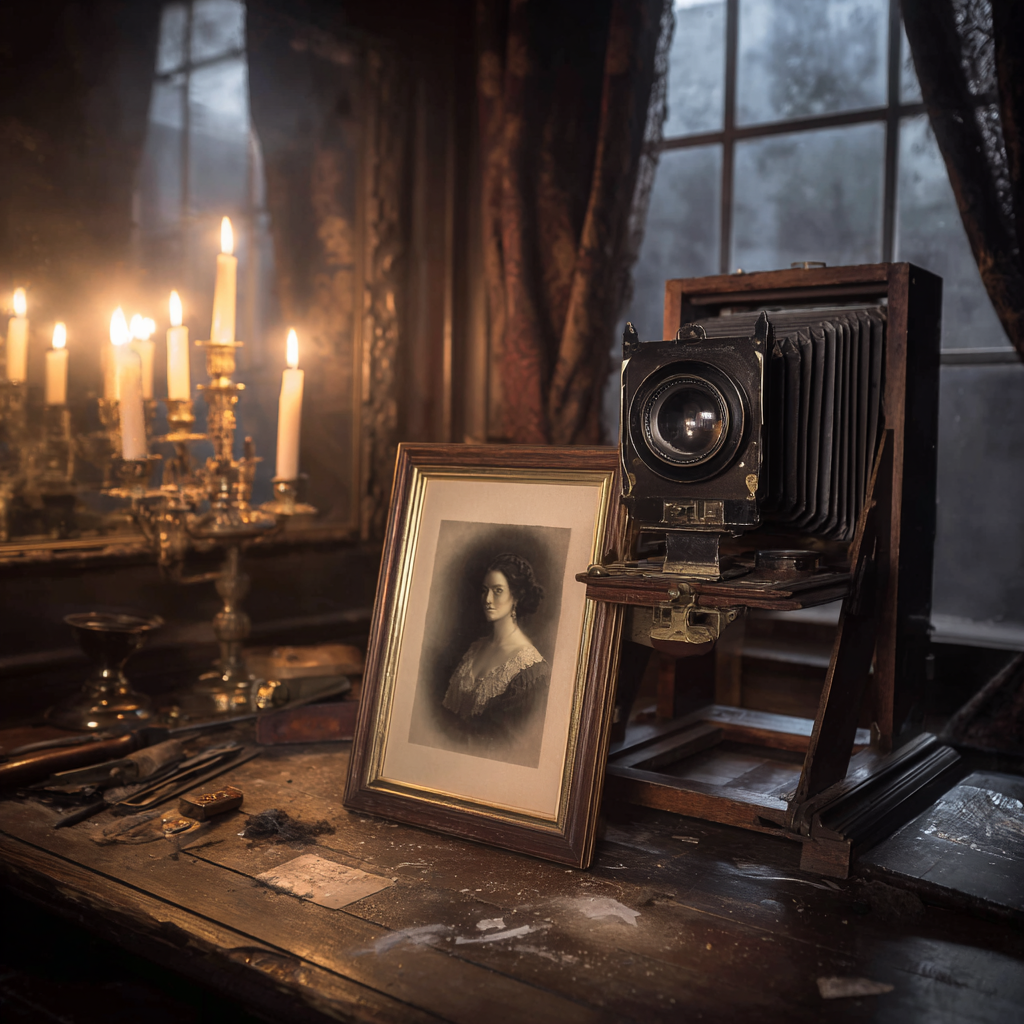
Shadows on Glass
As the century progressed, so did the fascination with making the invisible visible. Spiritualism gained ground, offering comfort to those in mourning through séances, mediums, and messages from beyond. Then came something even more tantalising: photographs that seemed to capture the spirits themselves.
William Mumler, a Boston engraver turned photographer, began producing portraits that showed faint, ethereal figures hovering behind living subjects. Whether through deliberate double exposure or genuine supernatural phenomena, these “spirit photographs” offered grieving families exactly what they craved: visual proof that death was not an ending.
Mumler was eventually tried for fraud in 1869, though the case was dismissed for lack of evidence. Perhaps it was all clever darkroom trickery, but people wanted to believe. When you’ve lost someone irreplaceable, wouldn’t you grasp at any shadow that might be them reaching back toward you?
Mary Todd Lincoln herself posed for one of these mysterious portraits after Abraham’s assassination. In the resulting image, the President’s ghostly form appears to rest his hands protectively on his widow’s shoulders. Whether you see comfort or charlatan’s trick depends, perhaps, on what your heart needs most.
These photographs, real or fabricated, reveal something profound about Victorian grief. It wasn’t simply about preserving memory, but about maintaining connection. They refused to accept that death severed all bonds, insisting instead that love could transcend even the grave’s finality.
The Architecture of Sorrow
The Victorians were nothing if not thorough in their approach to grief. Mourning became codified, structured, almost architectural in its precision. Women entered “full mourning” for two years and four months after losing a spouse, wearing only the deepest black paramatta silk or henrietta cloth. Every detail carried meaning: jet beads caught light like tears, crape fabric created that distinctive rustling whisper of sorrow, even stationery bore black borders of varying widths to indicate the depth of loss.
There were careful gradations from full mourning to “second mourning” to “half mourning,” when touches of white, grey, or purple might finally appear. Rules governed when a widow might venture into society, what music could be played, how letters should be written. It sounds rigid to modern sensibility, but perhaps it gave people permission to take their time with sorrow. Society expected grief to be visible, acknowledged, respected.
The mourning industry that grew around these customs was vast and lucrative. Mourning warehouses like Jay’s in Regent Street employed hundreds, creating everything from black-trimmed handkerchiefs to elaborate funeral plumes. Families of modest means might spend months’ wages on proper mourning attire, understanding that visible grief was also visible love.
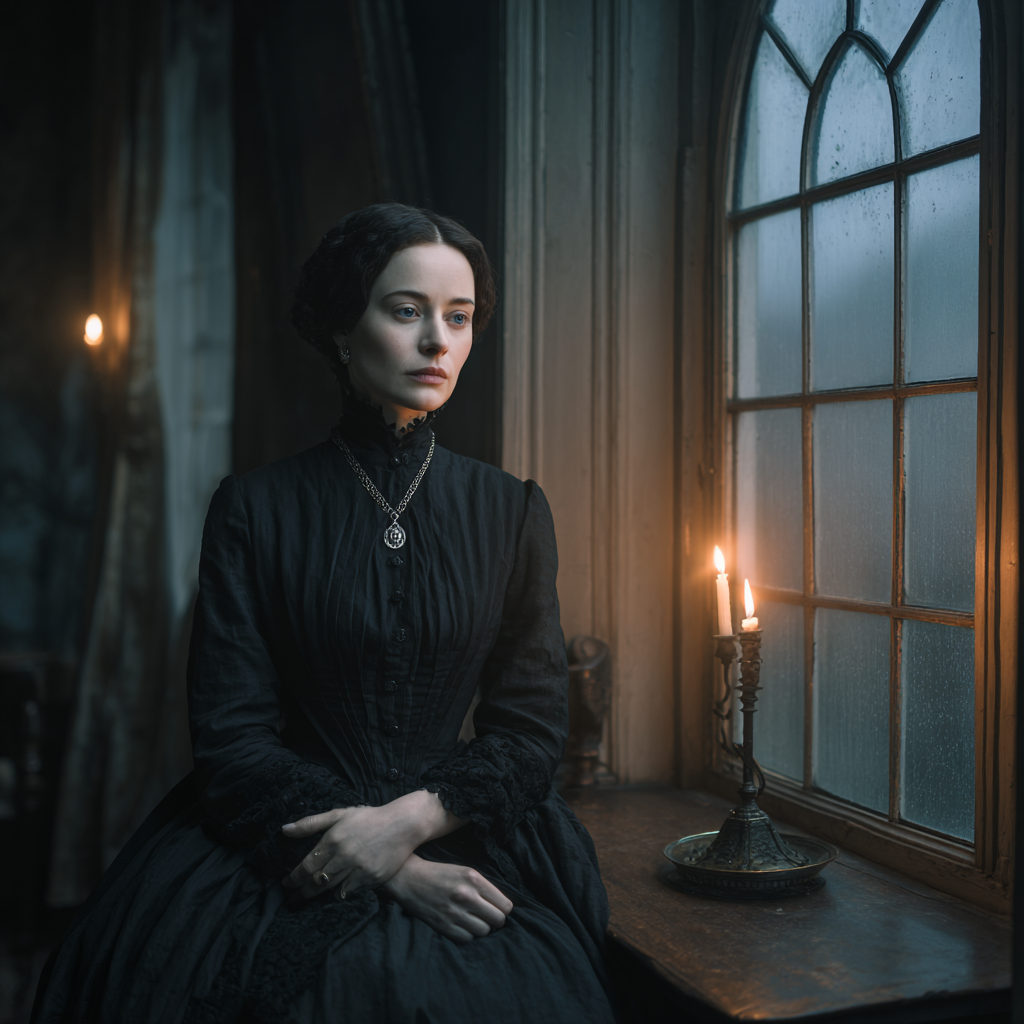
We rush grief these days. We offer condolences, speak of closure, encourage others to “move on.” But the Victorians understood something we’ve perhaps lost: that grief deserves time, space, and recognition. That it shouldn’t be hurried into hiding.
What Endures
These rituals might seem distant now, gothic and strange to contemporary eyes. But they were never really about death. They were about love, memory, and the very human struggle of not knowing quite what to do with all that sorrow when someone irreplaceable vanishes from the world.
Today, we speak of closure, of moving through stages, of healing. But the Victorians didn’t try to close the door on grief. They lived with it, made space for it, wove it into the fabric of daily life. In doing so, they created objects that still whisper of enduring love: a braid of hair sealed in a locket, a blurred photograph where only one figure sits perfectly still, a black silk dress with its hem of mourning crape carefully preserved in tissue paper.
We all try to hold onto the ones we’ve lost. Whether it’s an old jumper that still carries their scent, a voicemail we can’t bring ourselves to delete, or a photograph we keep close but rarely look at. The methods change across centuries and cultures. The longing doesn’t.
Perhaps that’s what the Victorians understood most clearly: that love doesn’t end with death, it simply changes shape. It becomes memory, ritual, the weight of a locket against the heart. It becomes the choice to remember not just in quiet moments but in the visible world, among the living.
A Quiet Invitation
If this glimpse into Victorian mourning has stirred something in you, take a quiet moment. Look through an old drawer, a box of photographs, or examine a piece of jewellery you don’t wear but can’t quite part with. Who are you remembering?
You might light a candle, write a name, or simply allow yourself to miss them for a little while longer. That, too, is a kind of memorial. And perhaps, in a world that often hurries past sorrow, that’s exactly what both the living and the dead need most.
After all, grief may be the price we pay for love, but memory is love’s most enduring gift.
